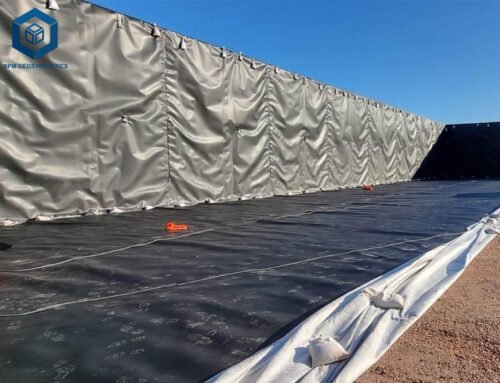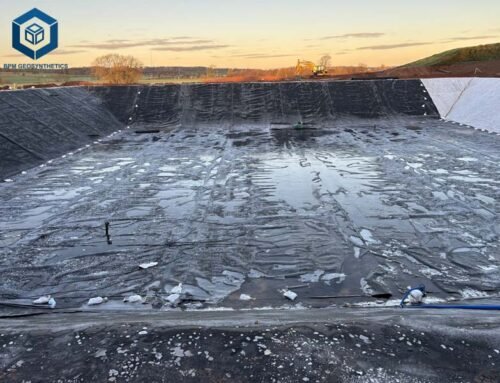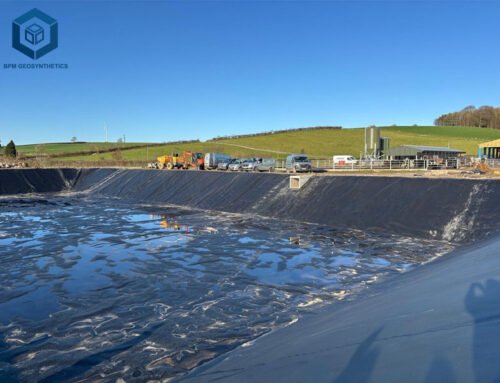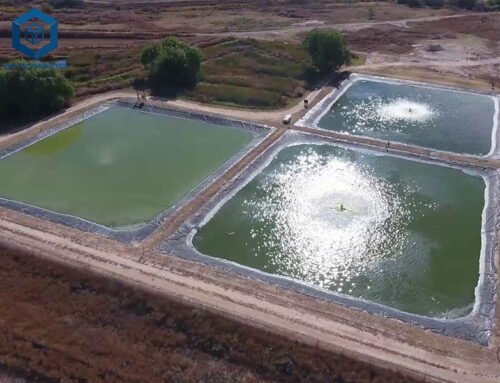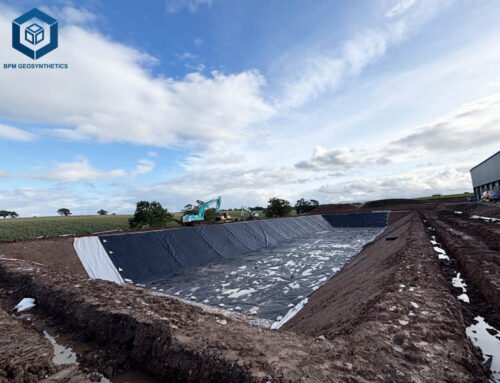Lake liner, also known as geomembrane liner, is essential geosynthetic materials used to create impermeable barriers for water retention in lakes, ponds, and reservoirs. Lake liners are critical for environmental protection, aquaculture, and water management. Lake liner cost ranges from $0.35 to $6.50 per square meter for materials, with installed costs reaching $8.50/m² for complex projects. This guide provides a comprehensive analysis of lake liner cost, specifications, and applications. It offers data-driven insights to help lake owners, engineers, and contractors optimize budgets while ensuring durable, high-performance solutions.
1. What Is a Lake Liner?
A lake liner is a synthetic geomembrane designed to prevent water seepage in artificial or natural water bodies, per ASTM D4439. Made from materials like high-density polyethylene (HDPE), linear low-density polyethylene (LLDPE), polyvinyl chloride (PVC), or ethylene propylene diene monomer (EPDM), lake liners achieve hydraulic conductivity below 10⁻¹² m/s, ensuring 95% water retention, per ASTM D5887. Incorporating 2.5% carbon black and UV stabilizers, they retain 85% tensile strength after 500 hours of UV exposure, per ASTM D4355.
Lake liners are used in 20% of global geomembrane applications, including recreational lakes, aquaculture ponds, and stormwater reservoirs, per Grand View Research 2022. They reduce water loss by 90% in reservoirs and ensure fish-safe environments in aquaculture, per Aquaculture Magazine 2024. Their durability (20–100 years) and chemical resistance make them ideal for diverse climates, from -40°C to 60°C.
Importance of Lake Liners
- Water Retention: Retain 95% of water, reducing evaporation and seepage, per Irrigation Association 2025.
- Environmental Protection: Prevent 95% of contaminant leakage, protecting groundwater, per EPA 2024.
- Cost Efficiency: Save 15–20% on maintenance compared to clay or concrete, per Western Liner 2018.
Versatility: Suit lakes, ponds, aquaculture, and stormwater systems, per bpmgeosynthetics.com.

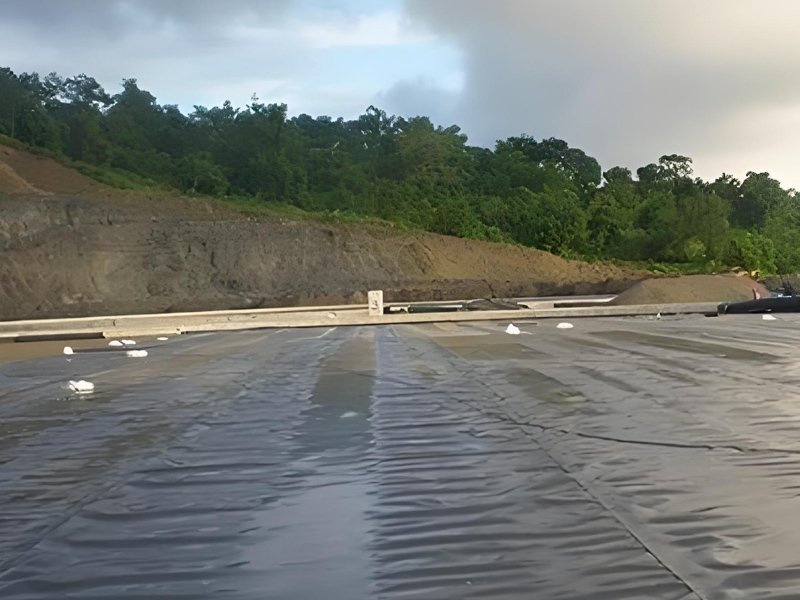
2. Factors Influencing Lake Liner Cost
Lake liner costs vary based on material, thickness, project scale, and installation complexity. Below are key factors, supported by industry data:
Material Type
- HDPE: $0.50–$3.50/m², 95% chemical resistance, 50–100-year lifespan, per ASTM GRI-GM13.
- LLDPE: $0.60–$2.50/m², 400–700% elongation for irregular surfaces, per ASTM GRI-GM17.
- PVC: $0.35–$2.00/m², cost-effective but less durable in UV exposure.
- EPDM: $0.75–$2.00/m², high UV resistance, 20–30-year exposed lifespan, per Geosynthetics Magazine 2024.
- RPE: $0.40–$0.90/m², 20% higher tear resistance.
- Bentonite Clay (GCL): $1.50–$5.00/m², self-healing but heavy, per bpmgeosynthetics.com.
Thickness
- 2–0.5 mm (8–20 mils): $0.35–$1.50/m², for small decorative lakes, per bpmgeosynthetics.com.
- 75–1.0 mm (30–40 mils): $1.00–$2.50/m², for aquaculture and medium lakes, per Solmax 2024.
- 5–2.0 mm (60–80 mils): $2.00–$5.00/m², for large lakes and reservoirs, per ASTM GRI-GM13.
- 0 mm (120 mils): $5.00–$6.50/m², for high-risk applications.
Surface Texture
- Smooth: $0.35–$5.00/m², easier to install, suited for flat lake beds, per ASTM D5887.
- Textured: $1.00–$6.50/m², 15% higher friction for sloped lake banks, per ASTM D5323.
Project Size
- Small Lakes (<1,000 m²): $1.50–$6.50/m², higher per-unit costs.
- Large Lakes (>10,000 m²): $0.35–$5.00/m², 15–30% bulk discounts, per bpmgeosynthetics.com.
Geographic Location
- Asia-Pacific (e.g., India, China): $0.35–$5.00/m², due to local production.
- North America/Europe: $2.00–$6.50/m², reflecting higher labor and import costs, per Solmax 2024.
- Africa: $1.00–$5.50/m², driven by logistics, per TradeIndia.
Installation Requirements
- Labor: $0.50–$2.50/m², higher for complex slopes, per Western Liner 2018.
- Geotextile Underlay: $0.30–$1.00/m², increases puncture resistance by 30%, per ASTM D5819.
- Welding Equipment: $3,000–$6,500 for hot wedge welders, per BPM Geosynthetics.
Market Trends
- Raw Material Costs: Polyethylene resin prices may rise 7–10% in 2025 due to oil price volatility, per Grand View Research 2022.
- Sustainability: Recycled HDPE ($0.50–$3.00/m²) saves 20–30% but has a 10–20-year lifespan.
- Demand: Asia-Pacific’s 45% market share may increase prices by 5–10%, per MarketsandMarkets 2024.
3. Typical Lake Liner Price Ranges in 2025
Based on 2025 market data, lake liner prices vary by material and application:
- HDPE (0.5–1.0 mm): $0.50–$2.50/m², for small lakes and aquaculture, per bpmgeosynthetics.com.
- HDPE (1.5–2.0 mm): $2.00–$5.00/m², for large lakes and reservoirs, per Solmax 2024.
- LLDPE (0.5–1.0 mm): $0.60–$2.50/m², for flexible lake beds, per ASTM GRI-GM17.
- PVC (0.5–1.5 mm): $0.35–$2.00/m², for decorative lakes.
- EPDM (0.75–1.5 mm): $0.75–$2.00/m², for UV-exposed lakes, per Geosynthetics Magazine 2024.
- RPE (0.5–1.0 mm): $0.40–$0.90/m², for lightweight applications.
- GCL (5–8 mm): $1.50–$5.00/m², for self-healing lake liners, per bpmgeosynthetics.com.
Note: Prices exclude taxes, shipping, and installation. Bulk orders (>10,000 m²) and local sourcing save 15–30%.
4. Specifications of Lake Liners
Lake liners are engineered with specific parameters to ensure performance. Below are key specifications, per industry sources:
Material Composition
- HDPE: 97.5% polyethylene resin, 2.5% carbon black, 95% chemical resistance, per ASTM GRI-GM13.
- LLDPE: 0.915–0.925 g/cm³ density, 400–700% elongation, per ASTM GRI-GM17.
- PVC: 1.2–1.4 g/cm³ density, flexible but less UV-resistant.
- EPDM: Rubber-based, 500% elongation, high UV resistance, per Geosynthetics Magazine 2024.
- RPE: Reinforced polyethylene, 20% higher tear resistance.
- GCL: Bentonite clay with geotextiles, self-healing, per bpmgeosynthetics.com.
Thickness
- Range: 0.2–3.0 mm (8–120 mils), per ASTM D5199.
- Common: 0.5 mm (small lakes), 1.5–2.0 mm (large lakes), per bpmgeosynthetics.com.
- Impact: Each 0.5 mm increase adds $1.00–$2.50/m².
Tensile Strength
- HDPE: 20–40 kN/m, per ASTM D6693.
- LLDPE: 15–30 kN/m, per ASTM GRI-GM17.
- EPDM: 8–15 kN/m, per Geosynthetics Magazine 2024.
Puncture Resistance
- HDPE: 800–1,200 N, per ASTM D4833.
- LLDPE: 600–1,000 N, suits irregular surfaces, per ASTM GRI-GM17.
- GCL: Self-healing, reducing puncture risk by 20%, per bpmgeosynthetics.com.
Permeability
- Hydraulic Conductivity: ≤10⁻¹¹ cm/s, ensuring 95% water retention, per ASTM D5887.
- Impact: Reduces seepage to <0.1 liters/ha/day, per Geosynthetic Research Institute 2023.
Roll Dimensions
- Width: 6–10 m, minimizing seams, per bpmgeosynthetics.com.
- Length: 50–200 m, customizable, per Solmax 2024.
5. Applications of Lake Liners
Lake liners serve diverse applications, ensuring water retention and environmental protection. Below are key uses, with data:
Recreational Lakes
- Purpose: Retain water for aesthetic or recreational lakes, reducing loss by 95%, per Irrigation Association 2025.
- Specs: 0.5–1.0 mm EPDM or PVC, UV-resistant, per Geosynthetics Magazine 2024.
- Example: A 2023 U.S. lake used 0.75 mm EPDM, lasting 25 years, per HomeGuide.
Aquaculture Ponds
- Purpose: Create fish-safe environments, reducing water loss by 85%, per Aquaculture Magazine 2024.
- Specs: 0.5–1.0 mm HDPE or LLDPE, non-toxic.
- Example: A 2021 Cambodian fish pond used 0.75 mm LLDPE, lasting 30 years, per bpmgeosynthetics.com.
Stormwater Reservoirs
- Purpose: Manage runoff, retaining 90% of water, per Irrigation Association 2025.
- Specs: 1.0–2.0 mm HDPE, 800–1,200 N puncture resistance, per ASTM GRI-GM13.
- Example: A 2022 U.S. reservoir used 1.5 mm HDPE, achieving 50-year durability, per bpmgeosynthetics.com.
Large-Scale Lakes
- Purpose: Support irrigation or water storage, with 95% retention, per Irrigation Association 2025.
- Specs: 1.5–3.0 mm HDPE or GCL, 30 kN/m tensile strength, per bpmgeosynthetics.com.
- Example: A 2023 Australian lake used 2.0 mm HDPE, per Solmax 2024.
Environmental Containment
- Purpose: Prevent contaminant seepage, reducing groundwater pollution by 95%, per EPA 2024.
- Specs: 1.5–2.0 mm HDPE or GCL, 95% chemical resistance.
- Example: A 2024 Canadian lake used 1.5 mm HDPE, per Geosynthetics Magazine 2024.
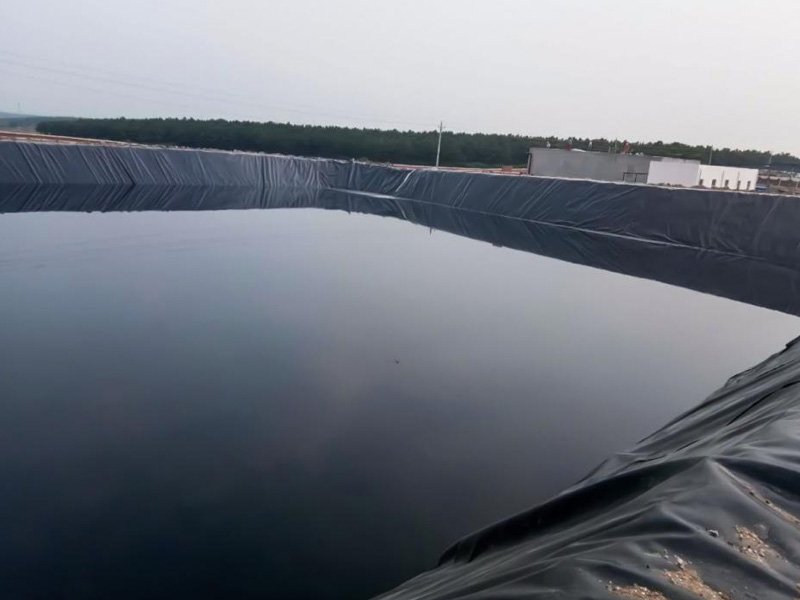
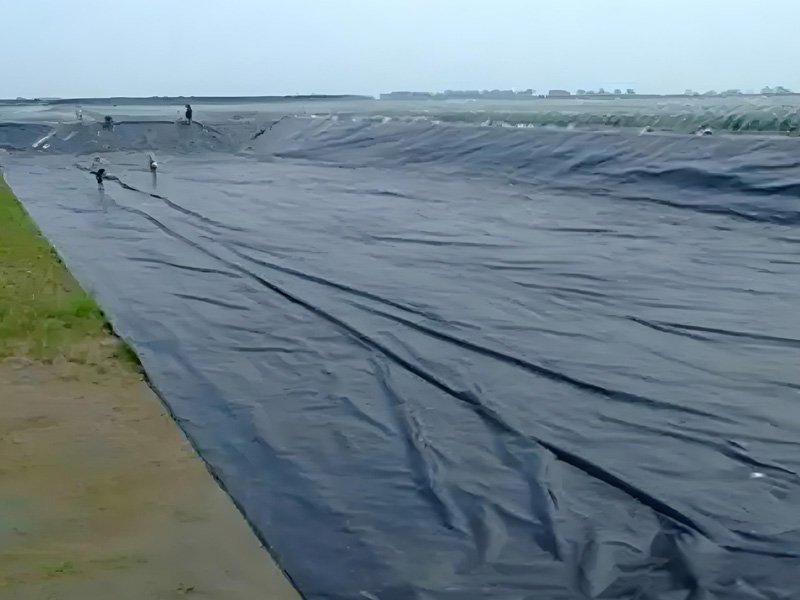
6. Cost Breakdown for Lake Liner Projects
To estimate total costs, consider material, installation, and accessories. Below is a sample breakdown for a 10,000 m² lake project in 2025:
Material Costs
- 5 mm HDPE Liner: $2.50/m² x 10,000 m² = $25,000, per bpmgeosynthetics.com.
- Geotextile Underlay (200 g/m²): $0.50/m² x 10,000 m² = $5,000, per Elmich.
- GCL (5 mm): $2.50/m² x 10,000 m² = $25,000, optional for extra protection, per bpmgeosynthetics.com.
Installation Costs
- Labor: $1.50/m² x 10,000 m² = $15,000, per Western Liner 2018.
- Hot Wedge Welding: $0.50/m² x 10,000 m² = $5,000, per BPM Geosynthetics.
- Site Preparation: $0.50/m² x 10,000 m² = $5,000, per ASTM D5819.
Additional Costs
- Shipping: $1,000–$2,000, depending on location.
- Testing (ASTM D6392): $500–$1,000 for seam integrity.
Total Estimated Cost: $81,500–$83,000 for 10,000 m², or $8.15–$8.30/m², excluding taxes.
7. Main Considerations When Choosing Lake Liners
Selecting the right lake liner requires careful evaluation. Below are key considerations, supported by data:
Project Requirements
- Application: Use 0.5–1.0 mm LLDPE for aquaculture, 1.5–2.0 mm HDPE for large lakes, per ASTM GRI-GM13.
- Lifespan: Choose virgin HDPE for 50–100 years buried, EPDM for 20–30 years exposed, per Solmax 2024.
- Standards: Ensure GRI-GM13 or ISO 9001 compliance for 95% reliability, per bpmgeosynthetics.com.
Environmental Conditions
- UV Exposure: Select EPDM or UV-stabilized HDPE for exposed lake edges, per Geosynthetics Magazine 2024.
- Chemical Exposure: Verify 95% resistance to site-specific chemicals.
- Temperature: HDPE suits -40°C to 60°C, per bpmgeosynthetics.com.
Installation and Site Conditions
- Subgrade: Smooth surfaces reduce punctures by 90%, per ASTM D5819.
- Seaming: Hot wedge welding ensures 95% seam strength, per ASTM D6392.
- Slope Stability: Textured HDPE increases friction by 15%, per ASTM D5323.
Cost and Availability
- Budget: Recycled HDPE ($0.50–$3.00/m²) saves 20–30%.
- Supplier Proximity: Local sourcing reduces shipping by 10–15%.
Sustainability
- Recycled Resins: Reduce waste by 10%, but have shorter lifespans, per ecogeox.com.
- Eco-Friendly Additives: Virgin resins with stabilizers cut environmental impact by 15%, per Textile Exchange 2024.
8. Cost-Saving Tips for Lake Liner Projects
To optimize budgets, consider these strategies:
- Bulk Purchasing: Order >10,000 m² for 15–30% discounts, per bpmgeosynthetics.com.
- Local Suppliers: Save 10–15% on shipping.
- Recycled Materials: Use recycled HDPE to save 20–30%.
- Standard Sizes: Use 6–8 m wide rolls to minimize seams, saving 10% on welding, per Solmax 2024.
- DIY for Small Projects: Save $0.15–$0.50/m² for lakes <500 m², per HomeGuide.
9. Conclusion
Lake liners are vital for water retention and environmental protection, with a 2025 market value of USD 2.61 billion and a 6.61% CAGR through 2030, per Mordor Intelligence 2025. Costs range from $0.35–$6.50/m² for materials, with installed costs up to $8.50/m², driven by material (HDPE, LLDPE, PVC, EPDM, RPE, GCL), thickness (0.2–3.0 mm), and installation complexity, per bpmgeosynthetics.com. Offering 95% water retention and 20–100-year lifespans, lake liners excel in recreational lakes, aquaculture, stormwater reservoirs, and large-scale water storage, per ASTM GRI-GM13. To optimize budgets, use bulk orders, local suppliers, and recycled resins for 15–30% savings. Ensure GRI-GM13 compliance, proper installation with geotextile underlays, and regular maintenance to extend lifespan by 20–50 years, per Geosynthetics Magazine 2024. Contact trusted suppliers like BPM Geosynthetics (BPM Geomembrane) for quotes and technical support.

